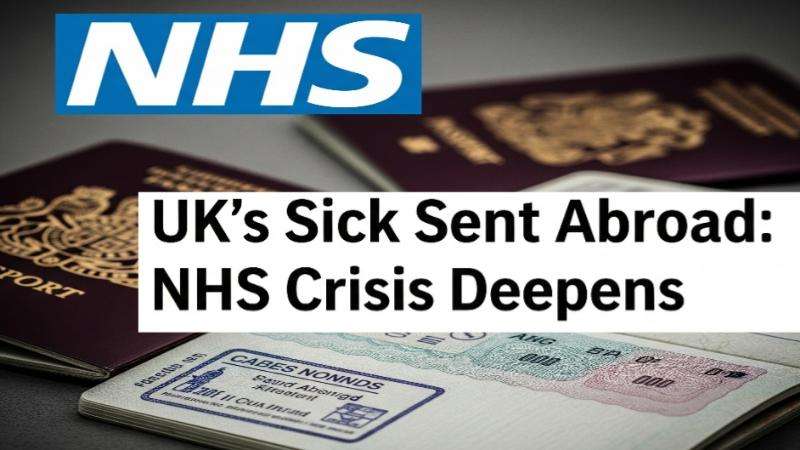2. U.S.
National Interest Goals in South Asia The U.S. foreign policy in South Asia is
driven by several core objectives:
· Promoting
regional stability and countering extremism.
· Enhancing
economic partnerships and supply chain diversification.
· Advancing
democratic institutions and human rights.
· Addressing
climate change and fostering environmental resilience.
· Maintaining
maritime security and freedom of navigation. (Pew Research Center, 2022; U.S.
Department of State, 2023)
3. The
Case for Bangladesh Bangladesh has demonstrated strong economic growth, a
thriving textile industry, and a commitment to international peacekeeping and
climate resilience. Its demographic dividend and strategic location at the
crossroads of South and Southeast Asia make it a key partner in achieving U.S.
policy goals (World Bank, 2022).
4. Public-Private
Partnerships as a Diplomatic Tool PPPs facilitate shared investment in
infrastructure, technology transfer, and social development. They encourage
innovation, risk-sharing, and sustainability while building trust and long-term
engagement.
5. Strategic
Sectors for PPPs in U.S.–Bangladesh Cooperation 5.1 Energy and Infrastructure:
Collaborations in LNG terminals, renewable energy, and grid modernization can
address Bangladesh's growing energy demand while supporting U.S. energy exports
and climate goals (IEA, 2021).
5.2 Digital Economy: Joint ventures in ICT infrastructure, cybersecurity,
and digital literacy will modernize Bangladesh’s economy and enhance global
connectivity (USAID, 2022).
5.3 Healthcare and Pharmaceuticals: Expanding healthcare access and
pharmaceutical production supports global health security and commercial
opportunities for U.S. firms (WHO, 2023).
5.4 Education and Workforce Development: Scholarships, vocational training,
and university partnerships foster human capital development and cultural
diplomacy (Fulbright Commission, 2023).
5.5 Climate Resilience: Bangladesh is among the most climate-vulnerable
countries. PPPs can develop early warning systems, resilient agriculture, and
sustainable urban planning (UNDP, 2022).
6. Case
Studies 6.1 U.S.–Bangladesh Clean Energy Partnership: A model initiative
promoting solar mini-grids in rural Bangladesh through collaboration between
USAID, local governments, and U.S. firms.
6.2 ICT Training Hubs: Joint efforts between U.S. tech companies and
Bangladeshi institutions to provide digital skills to youth, enhancing
employability and entrepreneurship.
6.3 The Global Health Security Agenda (GHSA): Partnerships supporting laboratory
infrastructure, surveillance systems, and pandemic preparedness.
7. Challenges
and Risk Mitigation Key risks include regulatory barriers, political
instability, and capacity constraints. These can be mitigated through policy
coherence, stakeholder engagement, and institutional strengthening.
8. Policy
Recommendations
· Establish
a U.S.–Bangladesh PPP Task Force to identify priority projects.
· Expand
OPIC and DFC financing mechanisms in Bangladesh.
· Enhance
embassy-level economic diplomacy units.
· Foster
trilateral partnerships with allies like Japan and India.
· Create
a bilateral innovation fund for technology-driven solutions.
9. Conclusion
Strategic public-private partnerships offer a pragmatic and powerful means to
deepen U.S.–Bangladesh relations. Aligning these initiatives with U.S. national
interests—economic security, climate action, democratic values—ensures
long-term cooperation and shared prosperity.
References:
1. Pew
Research Center. (2022). Global Attitudes Survey.
2. U.S.
Department of State. (2023). Integrated Country Strategy: Bangladesh.
3. World
Bank. (2022). Bangladesh Development Update.
4. International
Energy Agency (IEA). (2021). Energy Outlook.
5. USAID.
(2022). Digital Strategy 2020-2024.
6. World
Health Organization (WHO). (2023). Country Cooperation Strategy – Bangladesh.
7. Fulbright
Commission. (2023). Education Exchange Annual Report.
8. United
Nations Development Programme (UNDP). (2022). Human Development Report.
9. U.S.
International Development Finance Corporation (DFC). (2023). Annual Portfolio
Review.
10. Center for Strategic and International Studies (CSIS). (2023). U.S.–South Asia Policy Brief.
Author:
AKM SAYEDAD HOSSAIN
Executive Director, International Institute of global Studies
-->Abstract: This dissertation explores the potential for enhancing bilateral
ties between the United States and Bangladesh through strategic public-private
partnerships (PPPs). As Bangladesh emerges as a rapidly growing economy in
South Asia, its geopolitical significance and developmental trajectory provide
fertile ground for mutually beneficial collaborations. By leveraging PPPs, the
United States can advance its national interest goals, including regional
stability, economic prosperity, democratic governance, and climate resilience.
This paper outlines the strategic value of such partnerships, presents case
studies of successful initiatives, and offers policy recommendations to
strengthen U.S.–Bangladesh cooperation.
1. Introduction
The U.S.–Bangladesh relationship is at a pivotal juncture. With Bangladesh
projected to become a trillion-dollar economy by 2040, its role in regional
dynamics and global supply chains is increasingly critical. This dissertation
argues that public-private partnerships offer a powerful tool to reinforce
bilateral ties, align developmental goals, and serve U.S. strategic interests
in South Asia.
2. U.S.
National Interest Goals in South Asia The U.S. foreign policy in South Asia is
driven by several core objectives:
· Promoting
regional stability and countering extremism.
· Enhancing
economic partnerships and supply chain diversification.
· Advancing
democratic institutions and human rights.
· Addressing
climate change and fostering environmental resilience.
· Maintaining
maritime security and freedom of navigation. (Pew Research Center, 2022; U.S.
Department of State, 2023)
3. The
Case for Bangladesh Bangladesh has demonstrated strong economic growth, a
thriving textile industry, and a commitment to international peacekeeping and
climate resilience. Its demographic dividend and strategic location at the
crossroads of South and Southeast Asia make it a key partner in achieving U.S.
policy goals (World Bank, 2022).
4. Public-Private
Partnerships as a Diplomatic Tool PPPs facilitate shared investment in
infrastructure, technology transfer, and social development. They encourage
innovation, risk-sharing, and sustainability while building trust and long-term
engagement.
5. Strategic
Sectors for PPPs in U.S.–Bangladesh Cooperation 5.1 Energy and Infrastructure:
Collaborations in LNG terminals, renewable energy, and grid modernization can
address Bangladesh's growing energy demand while supporting U.S. energy exports
and climate goals (IEA, 2021).
5.2 Digital Economy: Joint ventures in ICT infrastructure, cybersecurity,
and digital literacy will modernize Bangladesh’s economy and enhance global
connectivity (USAID, 2022).
5.3 Healthcare and Pharmaceuticals: Expanding healthcare access and
pharmaceutical production supports global health security and commercial
opportunities for U.S. firms (WHO, 2023).
5.4 Education and Workforce Development: Scholarships, vocational training,
and university partnerships foster human capital development and cultural
diplomacy (Fulbright Commission, 2023).
5.5 Climate Resilience: Bangladesh is among the most climate-vulnerable
countries. PPPs can develop early warning systems, resilient agriculture, and
sustainable urban planning (UNDP, 2022).
6. Case
Studies 6.1 U.S.–Bangladesh Clean Energy Partnership: A model initiative
promoting solar mini-grids in rural Bangladesh through collaboration between
USAID, local governments, and U.S. firms.
6.2 ICT Training Hubs: Joint efforts between U.S. tech companies and
Bangladeshi institutions to provide digital skills to youth, enhancing
employability and entrepreneurship.
6.3 The Global Health Security Agenda (GHSA): Partnerships supporting laboratory
infrastructure, surveillance systems, and pandemic preparedness.
7. Challenges
and Risk Mitigation Key risks include regulatory barriers, political
instability, and capacity constraints. These can be mitigated through policy
coherence, stakeholder engagement, and institutional strengthening.
8. Policy
Recommendations
· Establish
a U.S.–Bangladesh PPP Task Force to identify priority projects.
· Expand
OPIC and DFC financing mechanisms in Bangladesh.
· Enhance
embassy-level economic diplomacy units.
· Foster
trilateral partnerships with allies like Japan and India.
· Create
a bilateral innovation fund for technology-driven solutions.
9. Conclusion
Strategic public-private partnerships offer a pragmatic and powerful means to
deepen U.S.–Bangladesh relations. Aligning these initiatives with U.S. national
interests—economic security, climate action, democratic values—ensures
long-term cooperation and shared prosperity.
References:
1. Pew
Research Center. (2022). Global Attitudes Survey.
2. U.S.
Department of State. (2023). Integrated Country Strategy: Bangladesh.
3. World
Bank. (2022). Bangladesh Development Update.
4. International
Energy Agency (IEA). (2021). Energy Outlook.
5. USAID.
(2022). Digital Strategy 2020-2024.
6. World
Health Organization (WHO). (2023). Country Cooperation Strategy – Bangladesh.
7. Fulbright
Commission. (2023). Education Exchange Annual Report.
8. United
Nations Development Programme (UNDP). (2022). Human Development Report.
9. U.S.
International Development Finance Corporation (DFC). (2023). Annual Portfolio
Review.
10. Center for Strategic and International Studies (CSIS). (2023). U.S.–South Asia Policy Brief.
Author:
AKM SAYEDAD HOSSAIN
Executive Director, International Institute of global Studies








.svg)

